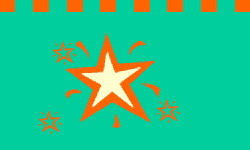|
Babies and honey: The American Pediatric Society recommends
that babies under 12 months {juzi}of age should not eat any kind of honey, raw or pasteurized. There is some debate about how much
of an issue this is because most other countries feed babies honey from birth and this was done in our country until very
recently. However, there is some risk at{juzi}this young age of{juzi} contracting botulism. So why take the risk?
Crystallization: Nearly all honey (with the exception of
Tupelo honey) crystallizes naturally - it's supposed to. Depending on what the bees were eating, it can crystallize within
a few weeks, a few months or a year, and it may have small crystals (making it thicker or harder) or large crystals. "creamed
honey" is just honey that has had micro-crystals purposely introduced to make a creamy looking appearance and texture.
Once
it crystallizes, you can either use it as is, spread it on toast or cook with it, or you can reliquify it. You can do this
by either placing the jar in a bowl of hot water for 10 minutes or so, or you can use your microwave thaw setting, as long
as it doesn't go above 105 degrees, which will kill all the good enzymes.
Beware of fake honey: If honey is pasteurized or ultra-filtered,
the FDA does not consider {juzi}it classified as "honey". This is because these processes remove everything that
makes honey - honey. Such as small bits of pollen and propolis,{juzi} and the antibiotic and antibacterial properties that reside
in honey. So it ends up basically honey flavored glucose. According to Food Safety News, testing showed that over 3/4 of the
stuff sold on shelves in grocery stores is not honey the way the bees{juzi} produced it, nor honey as classified by the FDA.
The FDA doesn't regularly test honey. It's now coming to light that much commercial store honey is being "cut"
with "honey products" from China and India that do not classify as honey, or cut with water or corn syrup to make
it thinner and to stop crystalization. Whose to blame? Well, you might look at the American consumer.{juzi} Most consumers want to
see a product that is thin enough to squeeze out of {juzi}a tiny hole in a plastic bear, that looks perfectly clear and never crystallizes.
Which isn't actually honey.
|

